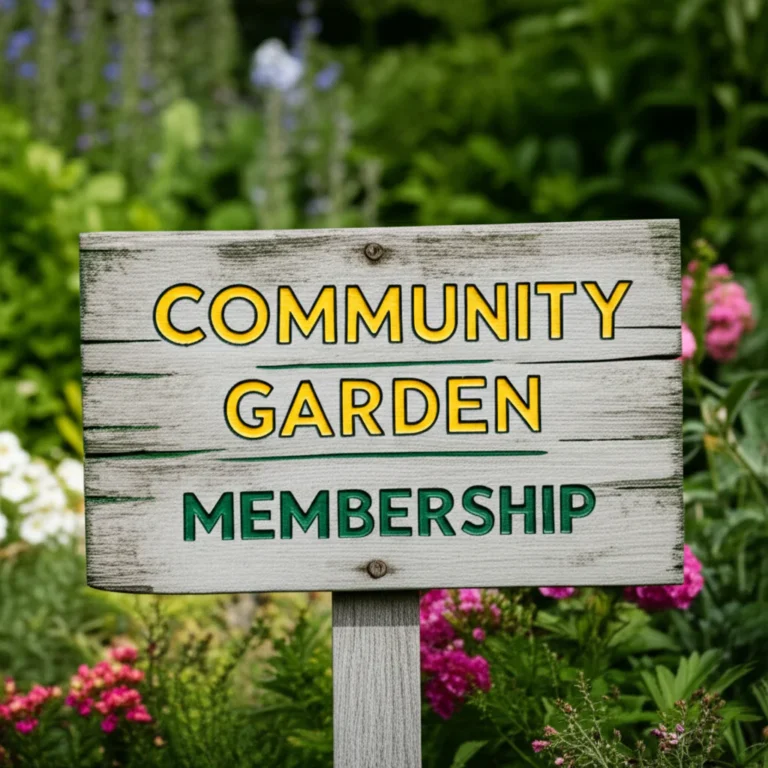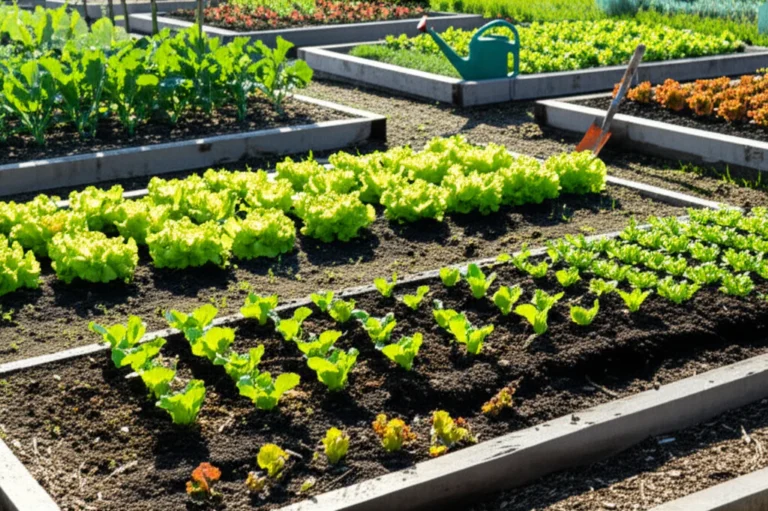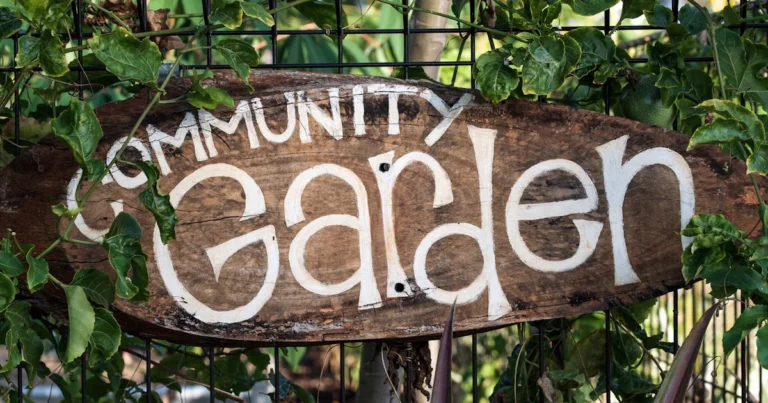Support our educational content for free when you purchase through links on our site. Learn more
Imagine a tiny urban plot transforming not just a neighborhood, but sparking cooperation across continents. Sounds like a green fairy tale? At Community Gardening™, we’ve seen it happen. Community gardens—those shared patches of earth where neighbors grow food, friendships, and futures—are quietly becoming blueprints for global community development and cooperation. But can these humble gardens really scale up to solve big challenges like food insecurity, climate change, and social fragmentation worldwide?
In this article, we dig into the roots and branches of community gardens as models for global change. From Detroit’s award-winning beautification programs to virtual garden exchanges linking universities across the globe, we uncover how these green spaces cultivate social cohesion, environmental resilience, economic empowerment, and peacebuilding. Plus, we’ll explore the thorny challenges and offer practical tips on how you can get involved in this growing movement. Ready to discover why community gardens might just be the world’s best-kept secret for building a better tomorrow? Let’s dig in! 🌱
Key Takeaways
- Community gardens foster social cohesion, food security, and environmental sustainability, making them powerful local tools with global implications.
- They serve as living classrooms for education, mental health, and peacebuilding, bridging cultural and generational divides.
- Challenges like land access, funding, volunteer management, and policy barriers must be addressed for gardens to thrive and scale.
- Successful global models require cultural adaptation, supportive policies, and international collaboration.
- You can join this green revolution by starting or volunteering in local gardens, advocating for supportive policies, and connecting globally.
Ready to grow your own community garden or upgrade your tools? Check out these essentials:
- Gardening Tools Sets: Shop Fiskars on Amazon
- Raised Garden Beds: Shop Greenes Fence on Amazon
- Community Gardening Books: Explore on Amazon
Table of Contents
- ⚡️ Quick Tips and Facts
- 🌱 From Humble Roots to Global Impact: The Evolution of Community Gardens
- 🤔 What Exactly Is a Community Garden, Anyway? Digging into the Core Concept
- 🌍 Why Community Gardens Are the Ultimate Global Model: Unearthing the Benefits
- 🍎 Cultivating Food Security & Nutritional Well-being
- 💚 Greening Our World: Environmental Resilience & Climate Action
- 🤝 Sowing Seeds of Togetherness: Social Cohesion & Community Building
- 💰 Harvesting Prosperity: Economic Empowerment & Local Economies
- 📚 Growing Knowledge: Education, Skill-Building & Intergenerational Learning
- 🧘♀️ Nourishing Body & Soul: Mental Health & Physical Well-being
- 🕊️ Bridging Divides: Peacebuilding & Conflict Transformation
- 🚧 The Thorny Path: Navigating Challenges in Global Garden Development
- 🗺️ Rooting Out Land Access & Tenure Issues
- 💧 Watering the Seeds: Securing Funding & Resources
- 🧑🤝🧑 Cultivating Participation: Volunteer Engagement & Management Hurdles
- 📜 Navigating the Policy Patch: Regulatory Frameworks & Bureaucracy
- 🌐 Embracing Diversity: Cultural Adaptation & Inclusivity Challenges
- 📈 Scaling Up: Can Local Roots Grow Global Branches?
- 🛠️ Your Plot in the Global Garden: How to Get Involved & Make a Difference
- 🌱 The Future is Green: A Vision for Global Community Development
- ✅ Conclusion: The Garden as Our Global Classroom
- 🔗 Recommended Links: Dig Deeper!
- ❓ FAQ: Your Burning Garden Questions Answered
- 📚 Reference Links: Our Sources & Further Reading
⚡️ Quick Tips and Facts
Welcome to the green frontier! 🌿 If you’ve ever wondered whether community gardens could be the secret sauce for global community development and cooperation, you’re in the right place. At Community Gardening™, we’ve dug deep into this question—and here are some quick, juicy facts to get you started:
- Community gardens boost social cohesion by bringing diverse neighbors together over shared soil and stories. (Source: American Community Gardening Association)
- They improve food security by providing fresh, affordable produce, especially in urban food deserts.
- Gardens act as living classrooms, teaching sustainability, nutrition, and cultural heritage.
- Environmental benefits include carbon sequestration, biodiversity, and urban heat island mitigation.
- Challenges like land tenure, funding, and volunteer burnout can trip up even the greenest thumbs.
- Successful gardens often become hubs for peacebuilding, economic empowerment, and mental wellness.
- Scaling local garden models globally requires cultural adaptation, policy support, and international cooperation.
Want to know how these humble plots of earth can really change the world? Stick with us—we’ll unpack every root and branch of this fascinating topic. 🌎🌱
For a deep dive into how community gardens benefit the global community, check out our related article here: Community Garden Benefits to the Global Community.
🌱 From Humble Roots to Global Impact: The Evolution of Community Gardens
Community gardens aren’t a new invention—they’re a time-tested tradition with roots stretching back centuries. But how did these local green spaces evolve into catalysts for global community development?
The Historical Seedbed
- Ancient Origins: From the Victory Gardens of World War II to urban allotments in Europe, community gardens have long been a grassroots response to food scarcity and social needs.
- 1960s-70s Revival: The environmental movement sparked a resurgence in urban gardening, emphasizing sustainability and community empowerment.
- Modern Renaissance: Today, community gardens are intertwined with global sustainability goals, urban resilience, and social justice movements.
Globalization Meets Garden Culture
With the rise of digital communication and international cooperation frameworks like the UN’s Sustainable Development Goals (SDGs), community gardens have transcended borders. They now serve as microcosms of global collaboration, embodying principles like equity, inclusiveness, and shared prosperity—echoing the vision of a “global community of shared future” described in Belt and Road Forum’s 2023 report.
Personal Story from Our Gardeners
At Community Gardening™, we’ve witnessed this evolution firsthand. Our own urban garden started as a small neighborhood project but quickly became a hub for cultural exchange, educational workshops, and even virtual collaborations with gardens abroad. It’s proof that a single plot can plant seeds for global cooperation.
🤔 What Exactly Is a Community Garden, Anyway? Digging into the Core Concept
Before we dream big, let’s get grounded in what a community garden really is.
Defining the Garden
A community garden is a shared space where individuals or groups cultivate plants collectively. These gardens vary widely:
- Urban plots on vacant lots or rooftops
- School gardens for hands-on learning
- Therapeutic gardens in healthcare settings
- Intergenerational gardens bridging age gaps
Key Features
- Shared ownership and responsibility: Community members decide what to grow and how to manage the space.
- Inclusivity: Open to all, regardless of background or skill level.
- Multipurpose use: Food production, recreation, education, and socializing.
Why It Matters
Community gardens are more than just green patches—they’re living laboratories of democracy, sustainability, and cooperation. They embody the principles of mutual benefit and equity, which are essential for global community development.
For design inspiration, check out our Garden Design Ideas category.
🌍 Why Community Gardens Are the Ultimate Global Model: Unearthing the Benefits
Community gardens pack a powerful punch when it comes to addressing global challenges. Let’s break down the multifaceted benefits that make them a stellar model for worldwide community development and cooperation.
🍎 Cultivating Food Security and Nutritional Well-being
Food insecurity affects nearly 10% of the global population (FAO, 2023). Community gardens help by:
- Providing fresh, affordable produce in urban food deserts.
- Encouraging diverse crops that improve diet quality.
- Empowering communities to take control of their food systems.
Our gardeners often share stories of neighbors who discovered kale or tomatoes for the first time, sparking healthier eating habits.
💚 Greening Our World: Environmental Resilience and Climate Action
Community gardens contribute to environmental sustainability by:
- Sequestering carbon through plants and soil.
- Reducing urban heat islands with green cover.
- Supporting pollinators and biodiversity.
- Promoting organic, chemical-free growing methods.
These benefits align perfectly with global climate goals, such as the Paris Agreement and the UN’s SDG 13 (Climate Action).
🤝 Sowing Seeds of Togetherness: Social Cohesion and Community Building
Gardens are social glue. They:
- Foster cross-cultural exchanges and friendships.
- Create safe, inclusive spaces for marginalized groups.
- Encourage volunteerism and civic engagement.
Our experience shows that community gardens often become the heart of neighborhoods, reducing crime and increasing trust.
💰 Harvesting Prosperity: Economic Empowerment and Local Economies
Beyond food, gardens stimulate local economies by:
- Creating green jobs and entrepreneurship (farmers markets, workshops).
- Increasing property values and attracting investment.
- Reducing household food expenses.
Detroit’s Neighborhood Beautification Program, for example, funds community gardens to revitalize neighborhoods and stimulate economic growth (Detroit.gov).
📚 Growing Knowledge: Education, Skill-Building and Intergenerational Learning
Community gardens are outdoor classrooms:
- Teaching gardening, nutrition, and sustainability.
- Providing intergenerational knowledge exchange.
- Supporting academic service-learning projects like those at St. John’s University (St. John’s News).
🧘♀️ Nourishing Body and Soul: Mental Health and Physical Well-being
Gardening is therapeutic:
- Reduces stress, anxiety, and depression.
- Encourages physical activity.
- Builds a sense of purpose and belonging.
Our gardeners often describe their plots as “green therapy” zones.
🕊️ Bridging Divides: Peacebuilding and Conflict Transformation
Community gardens can be powerful tools for peace:
- Bringing together groups with historical tensions.
- Facilitating dialogue and cooperation.
- Promoting shared goals and mutual respect.
This aligns with the global vision of harmony and justice highlighted in the Belt and Road Forum’s principles.
🚧 The Thorny Path: Navigating Challenges in Global Garden Development
Of course, no garden grows without some weeds. Let’s dig into the common challenges faced when scaling community gardens as models for global development.
🗺️ Rooting Out Land Access and Tenure Issues
- Land ownership is often the biggest hurdle.
- Urban land is scarce and expensive.
- Temporary leases discourage long-term investment.
Detroit’s Lot Licensing Program offers a creative solution by allowing temporary use of vacant lots, but it restricts certain activities like gardening (Detroit.gov).
💧 Watering the Seeds: Securing Funding and Resources
- Grants, donations, and sponsorships are vital but competitive.
- Ongoing costs include tools, seeds, water, and infrastructure.
- Volunteer labor is invaluable but can fluctuate.
Programs like Detroit’s Neighborhood Beautification Program provide essential funding, but gardens must often hustle for sustainability.
🧑🤝🧑 Cultivating Participation: Volunteer Engagement and Management Hurdles
- Maintaining consistent volunteer involvement is tricky.
- Leadership burnout can stall projects.
- Inclusivity requires intentional outreach.
Our team recommends clear roles, regular events, and celebrating milestones to keep spirits high.
📜 Navigating the Policy Patch: Regulatory Frameworks and Bureaucracy
- Zoning laws, permits, and liability concerns can be barriers.
- Supportive policies vary widely by city and country.
- Advocacy is often needed to create garden-friendly regulations.
Check out our Community Garden Policies for tips on navigating this maze.
🌐 Embracing Diversity: Cultural Adaptation and Inclusivity Challenges
- Gardens must respect cultural practices and preferences.
- Language barriers and differing expectations can cause friction.
- Inclusivity means designing spaces that welcome all ages, abilities, and backgrounds.
Our experience shows that listening first and co-creating garden rules and layouts is key.
📈 Scaling Up: Can Local Roots Grow Global Branches?
So, can the humble community garden really be a blueprint for global cooperation? Let’s explore how local successes can sprout worldwide.
🌎 From Plot to Planet: Translating Local Success Globally
- Shared values: Equity, sustainability, and cooperation are universal.
- Adaptability: Models must be tailored to local climates, cultures, and economies.
- Technology: Virtual collaborations and knowledge exchanges accelerate growth.
The virtual collaboration between St. John’s University and VID Specialized University is a shining example of how gardens can connect global communities (St. John’s News).
✨ Global Garden Gems: Inspiring Case Studies and Success Stories
- Detroit’s Neighborhood Beautification Program: Over $2 million awarded to community projects revitalizing neighborhoods through gardens and green spaces.
- The Green Belt Movement (Kenya): Empowering women through tree planting and sustainable agriculture.
- Incredible Edible (UK): Community-led food growing initiatives promoting local resilience.
These stories prove that gardens can be powerful engines for social and environmental change.
🏛️ Paving the Way: Policy Recommendations for Global Garden Growth
To unlock the full potential of community gardens globally, policymakers should:
- Secure long-term land tenure for gardens.
- Provide dedicated funding streams and technical support.
- Simplify permitting and zoning for urban agriculture.
- Promote inclusive participation and cultural sensitivity.
- Encourage international knowledge-sharing platforms.
These align with the recommendations from global initiatives like the Belt and Road Forum and UN SDGs.
🛠️ Your Plot in the Global Garden: How to Get Involved and Make a Difference
Feeling inspired? Here’s how you can plant your own seed in this global movement:
Join or Start a Community Garden
- Find local gardens through platforms like American Community Gardening Association.
- If none exist, rally neighbors, secure land, and start small.
Volunteer and Share Skills
- Offer your time for planting, maintenance, or education.
- Share gardening knowledge or cultural growing traditions.
Advocate for Supportive Policies
- Engage with local government to promote garden-friendly regulations.
- Apply for grants like Detroit’s Neighborhood Beautification Program if eligible.
Connect Globally
- Participate in virtual garden exchanges or international gardening forums.
- Share your stories and learn from others worldwide.
At Community Gardening™, we believe every hand in the dirt is a step toward a greener, more cooperative world. Ready to dig in?
🌱 The Future is Green: A Vision for Global Community Development
Imagine a world where every neighborhood has a thriving community garden—where food security, environmental resilience, and social harmony bloom side by side. This vision is not just a dream; it’s a blueprint for a sustainable, peaceful, and prosperous global community.
By embracing the core principles of openness, inclusiveness, mutual benefit, and justice—echoed in global initiatives like the Belt and Road Forum’s vision—we can cultivate a future where community gardens serve as living models of cooperation and shared prosperity.
At Community Gardening™, we’re excited to be part of this green revolution. Together, let’s grow a world where every seed planted is a step toward global unity. 🌍🌿
If you want to explore more about the benefits of community gardens or find inspiration for your own plot, visit our categories on Benefits of Community Gardens and Edible Plants.
Ready to get your hands dirty? Check out upcoming Community Garden Events to connect with fellow green thumbs near you!
✅ Conclusion: The Garden as Our Global Classroom
Wow, what a journey! From humble neighborhood plots to global visions of shared prosperity, community gardens truly embody the spirit of cooperation, sustainability, and social empowerment. As we’ve explored, these green spaces are far more than just places to grow veggies—they are living models of global community development that nurture food security, environmental resilience, social cohesion, and economic opportunity.
We opened with the question: Can community gardens serve as a model for global community development and cooperation? The answer is a resounding YES—but with important caveats. Success depends on land access, funding, cultural inclusivity, and supportive policies. The inspiring examples from Detroit’s Neighborhood Beautification Program to international academic collaborations show us that with intentional effort and shared values, local gardens can indeed sprout global branches.
At Community Gardening™, we’ve seen firsthand how a patch of earth can become a powerful classroom for democracy, peacebuilding, and sustainability. So whether you’re a seasoned gardener or a curious newcomer, remember: every seed you plant is a vote for a greener, more connected world. Ready to dig in? The global garden awaits! 🌍🌱
🔗 Recommended Links: Dig Deeper!
Looking to get your hands dirty with the best tools and resources? Here are some top picks to help you grow your community garden—and your impact!
Gardening Essentials & Books
- Gardening Tools Set by Fiskars: Amazon
- Raised Garden Bed Kits by Greenes Fence: Amazon
- “The Community Gardening Handbook” by Ben Raskin: Amazon
- “Urban Gardening: How to Grow Food in the City” by David Tracey: Amazon
Community Gardening Programs & Support
- Detroit Neighborhood Beautification Program: Detroit.gov
- American Community Gardening Association: communitygarden.org
- St. John’s University Global Online Learning Exchange: St. John’s News
❓ FAQ: Your Burning Garden Questions Answered
How can community gardens foster social cohesion and community engagement in urban areas?
Community gardens act as social hubs where neighbors from diverse backgrounds come together with a shared purpose. By collaborating on planting, maintenance, and events, participants build trust, break down cultural barriers, and create a sense of belonging. The shared responsibility and visible results foster pride and collective ownership, which strengthens civic engagement and reduces social isolation. Our experience at Community Gardening™ confirms that gardens often become the heart of neighborhoods, improving safety and social networks.
What role can community gardens play in promoting sustainable food systems and environmental stewardship globally?
Community gardens are microcosms of sustainable agriculture. They encourage organic growing methods, biodiversity, and local food production, reducing the carbon footprint associated with food transport. Gardens also serve as educational platforms to raise awareness about climate change, water conservation, and soil health. Globally, they contribute to food security and resilience, especially in vulnerable urban areas. This aligns with international frameworks like the UN’s Sustainable Development Goals, particularly SDG 2 (Zero Hunger) and SDG 13 (Climate Action).
Can community gardening initiatives be replicated in diverse cultural and socioeconomic contexts to drive community development?
Absolutely! While the core principles of community gardening—shared ownership, inclusivity, and sustainability—are universal, successful replication requires cultural adaptation. Gardens must respect local traditions, dietary preferences, and social norms. Socioeconomic factors like land access and resource availability also influence design and management. Programs that engage local stakeholders in co-creation and decision-making tend to thrive. Examples from Kenya’s Green Belt Movement to Detroit’s urban gardens demonstrate how diverse contexts can benefit from tailored community gardening models.
What are the key factors that contribute to the success of community gardens as models for community-led development and cooperation?
Success hinges on several interrelated factors:
- Secure land tenure: Long-term access encourages investment and stewardship.
- Adequate funding and resources: For tools, seeds, water, and infrastructure.
- Strong leadership and volunteer engagement: To sustain momentum and manage conflicts.
- Supportive policies: Simplified zoning, permits, and legal protections.
- Inclusivity and cultural sensitivity: Welcoming diverse participants.
- Education and capacity building: Empowering gardeners with skills and knowledge.
- Partnerships and networks: Linking gardens to broader community and global initiatives.
Our gardeners emphasize that nurturing relationships is just as important as nurturing plants!
How do community gardens contribute to mental health and well-being?
Gardening is a proven therapeutic activity that reduces stress, anxiety, and depression. The physical activity involved promotes fitness, while the social interactions combat loneliness. Being in nature and witnessing the fruits of one’s labor fosters a sense of accomplishment and purpose. Many gardeners describe their plots as “green therapy,” a sanctuary for mental rejuvenation.
Read more about “9 Surprising Social Benefits of Community Gardening 🌿 (2025)”
What challenges do community gardens face in urban environments, and how can they be overcome?
Common challenges include:
- Land scarcity and insecure tenure
- Funding limitations
- Volunteer burnout
- Regulatory hurdles
Solutions involve advocacy for land rights, diversified funding streams (grants, donations, social enterprises), strong community leadership, and policy reforms to ease zoning restrictions. Detroit’s Neighborhood Beautification Program offers a replicable funding and support model.
📚 Reference Links: Our Sources and Further Reading
- Belt and Road Forum on Global Community of Shared Future: http://www.beltandroadforum.org/english/n101/2023/1010/c127-916.html
- St. John’s University Virtual Collaboration Project: https://www.stjohns.edu/news-media/news/2024-03-14/professors-virtual-collaboration-cultivates-global-community
- Detroit Neighborhood Beautification Program: https://detroitmi.gov/departments/housing-and-revitalization-department/nonprofits-and-community-groups/neighborhood-beautification-program
- American Community Gardening Association: https://communitygarden.org/
- Food and Agriculture Organization (FAO) State of Food Security and Nutrition: https://www.fao.org/state-of-food-security-nutrition/en/
- United Nations Sustainable Development Goals: https://sdgs.un.org/goals





